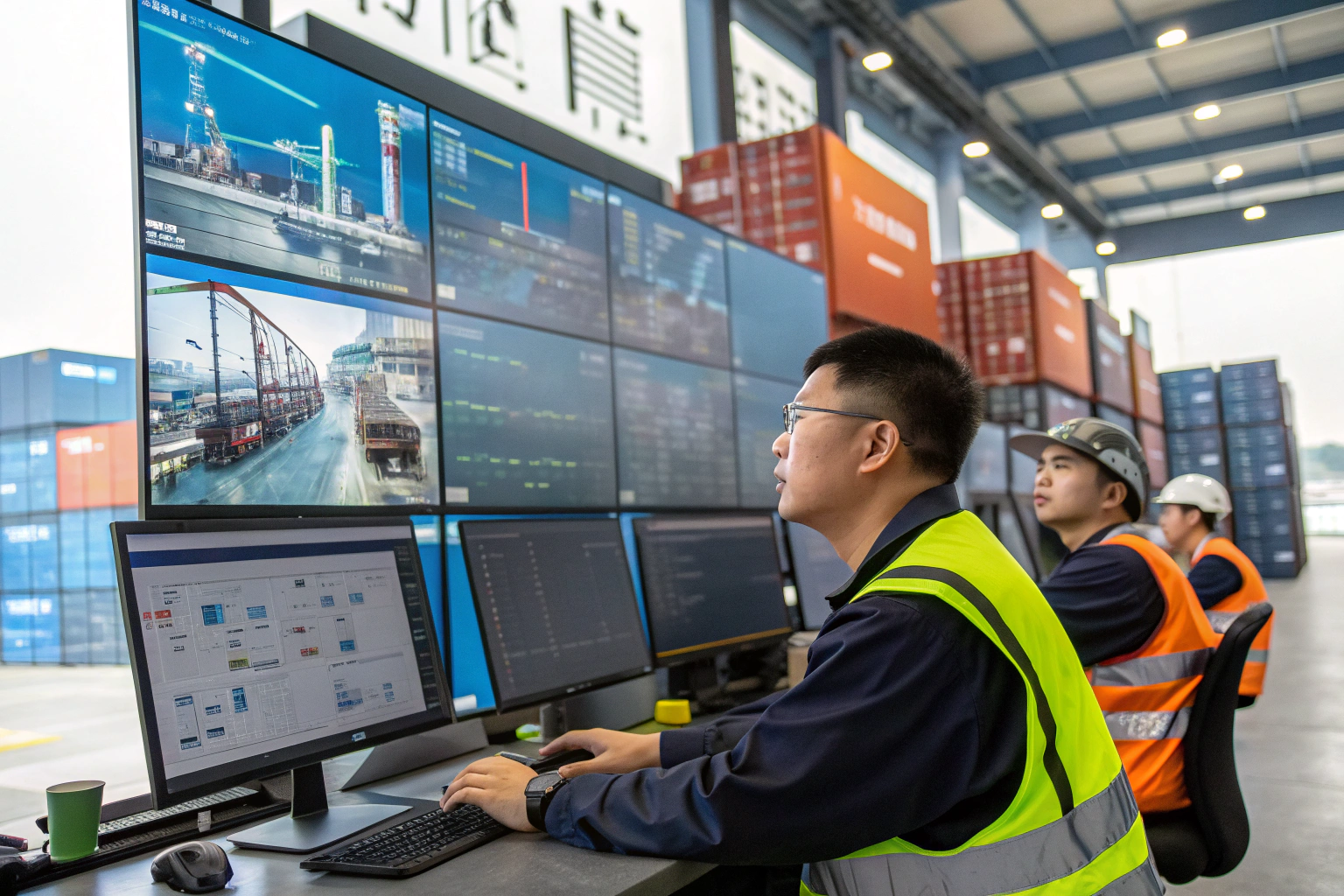Managing a supply chain from China involves coordinating multiple complex processes across international borders, time zones, and regulatory environments. Many businesses struggle with fragmentation—using different providers for different functions, leading to communication gaps, responsibility confusion, and missed optimization opportunities. The question of whether a single freight forwarder can effectively manage this complexity is crucial for operational efficiency.
A capable freight forwarder can indeed manage your entire China supply chain by integrating services including factory coordination, quality control, customs clearance, international transportation, and final delivery. The key is finding a forwarder with comprehensive China expertise, integrated technology platforms, and established local partnerships that create true end-to-end visibility and control.
Let's examine what true end-to-end supply chain management entails and how to identify forwarders capable of delivering this comprehensive service.
What does true end-to-end supply chain management include?
End-to-end supply chain management extends far beyond basic transportation to encompass all activities from product conception through delivery to your customer. A forwarder offering true comprehensive management should demonstrate capabilities across this entire spectrum.
The complete scope includes supplier identification and management, production monitoring and quality control, export documentation and customs, international transportation management, import clearance and compliance, warehousing and distribution, and inventory management and visibility. The most advanced providers also offer value-added services like kitting, labeling, and returns management. This comprehensive approach transforms your forwarder from a transportation vendor to a strategic supply chain partner.

How does production management fit into forwarding services?
Forwarders with strong China capabilities often provide:
- Factory identification and vetting based on your product requirements
- Production monitoring through local quality control teams
- Progress tracking with regular updates and photographic evidence
- Pre-shipment inspection to catch issues before goods leave China
- Documentation preparation ensuring accurate commercial invoices
These services prevent problems at the source rather than reacting to issues later in the supply chain.
What technology enables true end-to-end visibility?
Comprehensive management requires integrated technology providing:
- Single platform visibility across all supply chain stages
- Real-time status updates from factory to final delivery
- Document management for all certificates and compliance documents
- Performance analytics identifying improvement opportunities
- Exception management with proactive alerting
This technological integration is what separates true comprehensive providers from basic freight forwarders.
What are the benefits of single-provider supply chain management?
Consolidating your China supply chain under one capable forwarder offers significant advantages over managing multiple specialized providers. These benefits extend beyond simple convenience to tangible operational and financial improvements.
The primary advantages include responsibility consolidation with one point of accountability, cost optimization through integrated planning, process efficiency from reduced handoffs, enhanced visibility through unified technology, and strategic partnership development. Businesses using single-provider models typically experience 15-25% lower administrative costs, 30-40% faster problem resolution, and significantly improved supply chain reliability.

How does single-provider management reduce costs?
Cost savings emerge from multiple areas:
- Volume leverage across integrated services
- Process efficiency from reduced coordination requirements
- Error reduction through system integration
- Optimization opportunities across the entire supply chain
- Administrative simplification with unified billing and reporting
These savings often exceed the apparent transportation cost differences between specialized providers.
What operational improvements can you expect?
Operational benefits include:
- Faster decision-making with single-point responsibility
- Proactive issue resolution through comprehensive visibility
- Process standardization across all supply chain elements
- Continuous improvement from integrated performance data
- Scalability as your business grows and changes
These improvements create competitive advantages beyond simple cost metrics.
What capabilities should you look for in a comprehensive forwarder?
Not all freight forwarders possess the capabilities for true end-to-end supply chain management. Specific competencies and resources separate basic transportation providers from strategic supply chain partners.
The essential capabilities include China-based operational teams, integrated technology platforms, compliance expertise for both Chinese export and US import regulations, established carrier relationships across all modes, quality control resources within China, and financial stability to support your supply chain volume. Additionally, look for industry-specific experience relevant to your products and demonstrated success with businesses of your size and complexity.

Why is China-based presence crucial?
Local China operations provide:
- Direct factory communication without language barriers
- Cultural understanding of Chinese business practices
- Rapid response capability during production issues
- Relationship management with Chinese partners and authorities
- Market intelligence about regional developments
These advantages prove invaluable for managing complex supply chain issues.
What technology integration is essential?
Comprehensive management requires:
- Unified platform rather than disconnected systems
- Real-time data exchange between all parties
- Automated workflow across process boundaries
- Predictive analytics for proactive management
- API connectivity with your business systems
This technological foundation enables the visibility and control promised by end-to-end management.
What challenges might arise with single-provider models?
While the benefits are significant, businesses should also understand potential challenges with consolidated supply chain management. Awareness of these issues helps in selecting the right partner and establishing effective governance.
Potential challenges include over-dependency on a single provider, potential for complacency without competitive pressure, complexity of transitioning from multiple providers, and the risk of capability gaps in specific areas. These challenges can be mitigated through careful partner selection, clear performance metrics, regular business reviews, and maintaining some redundancy for critical functions.

How can you mitigate over-dependency risks?
Effective risk management includes:
- Clear performance metrics with consequences for underperformance
- Regular competitive benchmarking to ensure ongoing value
- Contractual exit provisions enabling smooth transitions if needed
- Knowledge preservation ensuring you retain supply chain understanding
- Alternative provider identification for business continuity planning
These measures maintain healthy partnership dynamics while protecting your business interests.
What transition challenges should you anticipate?
Moving to integrated management involves:
- Data migration from multiple systems to a unified platform
- Process redesign to leverage integrated capabilities
- Relationship transfer from multiple contacts to primary account management
- Performance baseline establishment for future improvement tracking
- Staff training on new processes and systems
Proper planning and phased implementation smooth these transition challenges.
Conclusion
A capable freight forwarder can indeed manage your entire China supply chain, delivering significant benefits through integrated planning, responsibility consolidation, and comprehensive visibility. However, this approach requires careful partner selection focusing on China expertise, technological capability, and proven experience with businesses like yours. The most successful implementations balance the efficiency of single-provider management with appropriate governance and risk mitigation strategies. When executed with the right partner, consolidated supply chain management transforms your logistics from a operational challenge into a competitive advantage, allowing you to focus on your core business while experts manage your global supply chain complexities.









